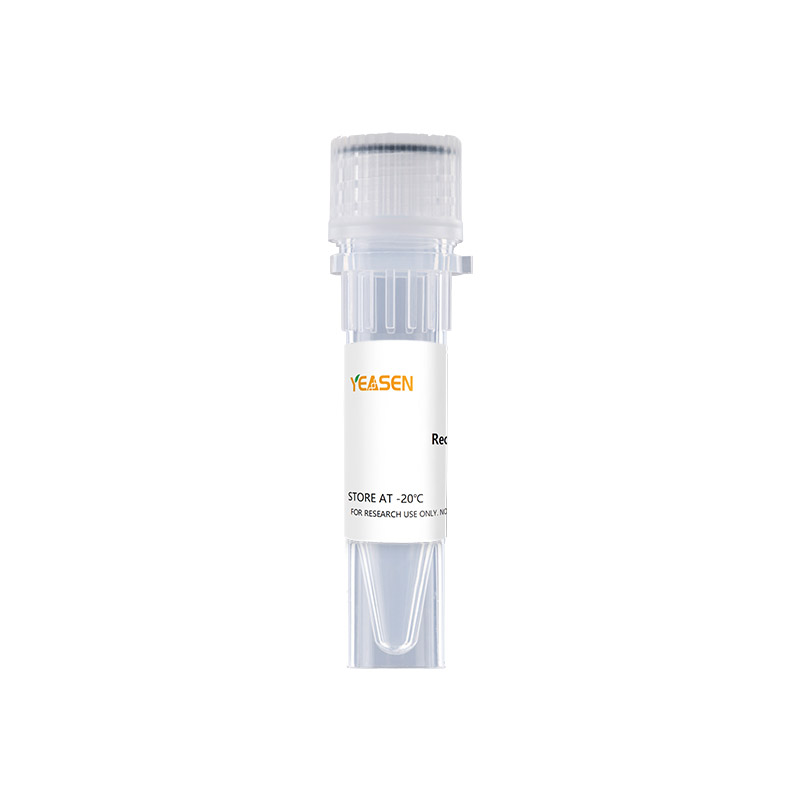

產(chǎn)品說明書
FAQ
COA
已發(fā)表文獻(xiàn)
TNF receptor 1 (TNF RI; also called TNF R-p55/p60 and TNFRSF1A) is a 55 kDa type I transmembrane protein member of the TNF receptor superfamily, designated TNFRSF1A. Mouse TNF RI is a 454 amino acid (aa) protein that contains a 21 aa signal sequence, a 191 aa extracellular domain (ECD) with a PLAD (pre-ligand assembly domain) that mediates constitutive dimer/trimer formation, followed by four CRD (cysteine-rich domains), a 23 aa transmembrane domain, and a 219 aa cytoplasmic sequence that contains a neutral sphingomyelinase activation domain and a death domain. The ECD of mouse TNF RI shares 70%, 88%, 67%, 70% and 64% aa sequence identity with human, rat, canine, feline and porcine TNF RI, respectively. Both TNF RI and TNF RII (TNFRSF1B) are widely expressed and contain four TNF-alpha trimer-binding CRD in their ECD. However, TNF RI is thought to mediate most of the cellular effects of TNF-alpha. It is essential for proper development of lymph node germinal centers and Peyer’s patches, and for combating intracellular pathogens such as Listeria. TNF RI is also a receptor for TNF-beta /TNFSF1B (lymphotoxin-alpha ). TNF RI is stored in the Golgi and translocates to the cell surface following pro-inflammatory stimuli. TNF-alpha stabilizes TNF RI and induces its sequestering in lipid rafts, where it activates NF kappa B and is cleaved by ADAM-17/TACE. Release of the 28-34 kDa TNF RI ECD also occurs constitutively and in response to products of pathogens such as LPS, CpG DNA or S. aureus protein A. Full-length TNF RI may also be released in exosome-like vesicles. Release helps to resolve inflammatory reactions, since it down-regulates cell surface TNF RI and provides soluble TNF RI to bind TNF-alpha. Exclusion from lipid rafts causes endocytosis of TNF RI complexes and induces apoptosis. Mutations of human TNF R1 can result in inflammatory episodes known as TRAPS (TNFR-associated periodic syndrome).
Product Properties
|
Synonyms |
CD120a; FPF; p55 |
|
Accession |
P25118 |
|
GeneID |
21937 |
|
Source |
E.coli-derived Mouse sTNF RI/TNFRSF1A, Ile22-Ala212. |
|
Molecular Weight |
Approximately 21.1 kDa. |
|
AA Sequence |
IHPSGVTGLV PSLGDREKRD SLCPQGKYVH SKNNSICCTK CHKGTYLVSD CPSPGRDTVC RECEKGTFTA SQNYLRQCLS CKTCRKEMSQ VEISPCQADK DTVCGCKENQ FQRYLSETHF QCVDCSPCFN GTVTIPCKET QNTVCNCHAG FFLRESECVP CSHCKKNEEC MKLCLPPPLA NVTNPQDSGT A |
|
Tag |
None |
|
Physical Appearance |
Sterile Filtered White lyophilized (freeze-dried) powder. |
|
Purity |
> 97 % by SDS-PAGE and HPLC analyses. |
|
Biological Activity |
The ED50 as determined by its ability to inhibit the TNF-α mediated cytotoxicity in the L-929 cells is less than 1 μg/mL, corresponding to a specific activity of > 1000 IU/mg in the presence of 0.1 ng/mL of rMuTNF-α. Fully biologically active when compared to standard. |
|
Endotoxin |
< 0.1 EU per 1μg of the protein by the LAL method. |
|
Formulation |
Lyophilized from a 0.2 µm filtered concentrated solution in PBS, pH7.4. |
|
Reconstitution |
We recommend that this vial be briefly centrifuged prior to opening to bring the contents to the bottom. Reconstitute in sterile distilled water or aqueous buffer containing 0.1 % BSA to a concentration of 0.1-1.0 mg/mL. Stock solutions should be apportioned into working aliquots and stored at ≤ -20℃. Further dilutions should be made in appropriate buffered solutions. |
Shipping and Storage
The products are shipped with ice pack and can be stored at -20℃ to -80℃ for 1 year.
Recommend to aliquot the protein into smaller quantities when first used and avoid repeated freeze-thaw cycles.
Cautions
1. Avoid repeated freeze-thaw cycles.
2. For your safety and health, please wear lab coats and disposable gloves for operation.
3. For research use only!
HB220318

